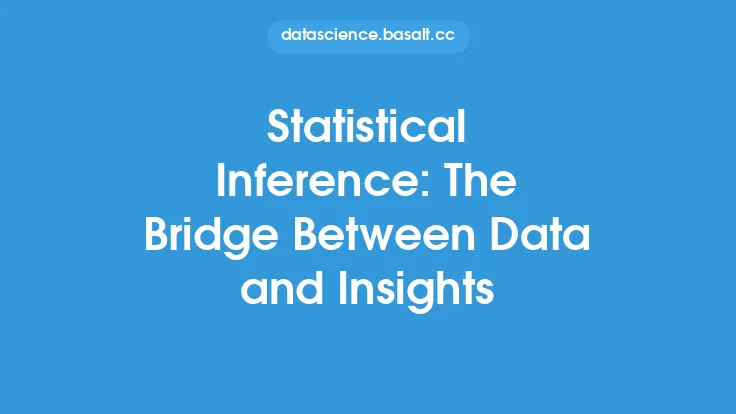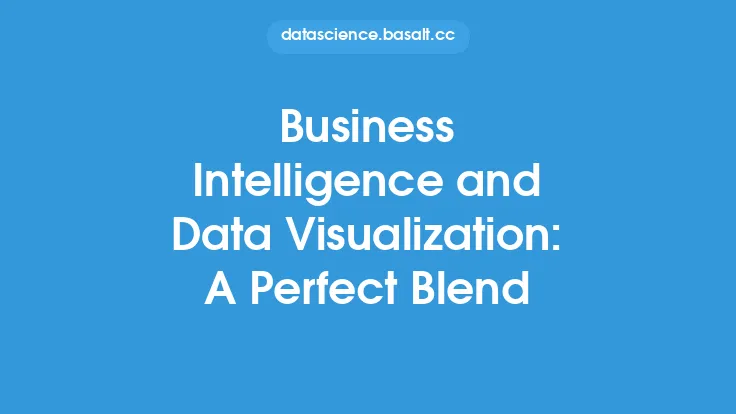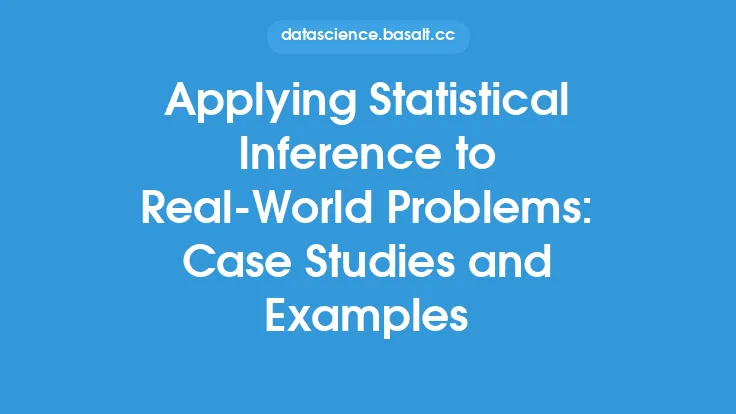Statistical inference is a crucial aspect of data analysis, as it enables researchers and data scientists to draw conclusions about a population based on a sample of data. However, the results of statistical inference can be difficult to interpret and communicate, especially for non-technical stakeholders. This is where data visualization comes in – a powerful tool that can help to present complex data insights in a clear and intuitive way. By combining statistical inference with data visualization, researchers and data scientists can create a more comprehensive and compelling narrative around their data, and ultimately drive better decision-making.
Introduction to Statistical Inference
Statistical inference is the process of using sample data to make conclusions about a population. This involves using statistical models and techniques, such as hypothesis testing and confidence intervals, to estimate population parameters and make predictions about future outcomes. Statistical inference is a critical component of data analysis, as it allows researchers to generalize their findings to a larger population and make informed decisions. However, statistical inference can be a complex and nuanced field, requiring a strong understanding of statistical theory and methodology.
The Role of Data Visualization in Statistical Inference
Data visualization is the process of using graphical representations to communicate data insights and findings. In the context of statistical inference, data visualization can play a critical role in presenting complex results in a clear and intuitive way. By using visualizations such as plots, charts, and graphs, researchers can illustrate the relationships between variables, highlight trends and patterns, and communicate the results of statistical models. Data visualization can also help to identify outliers and anomalies, and provide a more nuanced understanding of the data. Some common data visualization tools used in statistical inference include scatter plots, bar charts, histograms, and box plots.
Types of Data Visualization for Statistical Inference
There are several types of data visualization that can be used in statistical inference, each with its own strengths and weaknesses. Some common types of data visualization include:
- Univariate visualizations: These visualizations are used to display the distribution of a single variable, such as a histogram or box plot.
- Bivariate visualizations: These visualizations are used to display the relationship between two variables, such as a scatter plot or bar chart.
- Multivariate visualizations: These visualizations are used to display the relationships between multiple variables, such as a heatmap or clustering diagram.
- Interactive visualizations: These visualizations are used to allow users to explore the data in more detail, such as a dashboard or interactive plot.
Best Practices for Combining Statistical Inference and Data Visualization
To get the most out of combining statistical inference and data visualization, there are several best practices to keep in mind. These include:
- Keep it simple: Avoid using complex or overly technical visualizations that may be difficult for non-technical stakeholders to understand.
- Use intuitive colors and labels: Use colors and labels that are intuitive and easy to understand, such as using red for significant results and blue for non-significant results.
- Avoid 3D visualizations: 3D visualizations can be difficult to interpret and may not add any additional insight to the data.
- Use interactive visualizations: Interactive visualizations can allow users to explore the data in more detail and gain a deeper understanding of the results.
Technical Considerations for Combining Statistical Inference and Data Visualization
When combining statistical inference and data visualization, there are several technical considerations to keep in mind. These include:
- Data quality: The quality of the data can have a significant impact on the results of statistical inference and data visualization. It is essential to ensure that the data is accurate, complete, and consistent.
- Sample size: The sample size can also have a significant impact on the results of statistical inference. A larger sample size can provide more precise estimates and more reliable results.
- Model selection: The choice of statistical model can also have a significant impact on the results of statistical inference. It is essential to choose a model that is appropriate for the data and research question.
- Computational power: The computational power required to perform statistical inference and data visualization can be significant, especially for large datasets. It is essential to have access to sufficient computational resources to perform the analysis.
Common Challenges and Limitations
While combining statistical inference and data visualization can be a powerful approach, there are several common challenges and limitations to be aware of. These include:
- Interpretation of results: The interpretation of results from statistical inference and data visualization can be complex and nuanced, requiring a strong understanding of statistical theory and methodology.
- Communication of results: The communication of results from statistical inference and data visualization can also be challenging, especially for non-technical stakeholders.
- Data quality issues: Data quality issues, such as missing or inaccurate data, can have a significant impact on the results of statistical inference and data visualization.
- Computational limitations: Computational limitations, such as limited memory or processing power, can also limit the scope and complexity of the analysis.
Conclusion
In conclusion, combining statistical inference and data visualization is a powerful approach that can help to present complex data insights in a clear and intuitive way. By using data visualization to illustrate the results of statistical inference, researchers and data scientists can create a more comprehensive and compelling narrative around their data, and ultimately drive better decision-making. However, there are several technical considerations and common challenges to be aware of, including data quality issues, computational limitations, and interpretation and communication of results. By keeping these considerations in mind and using best practices for combining statistical inference and data visualization, researchers and data scientists can unlock the full potential of their data and drive meaningful insights and discoveries.





